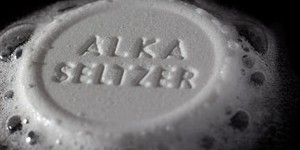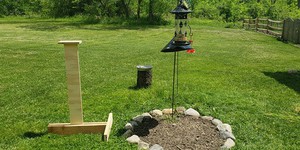Others Like “Ecological Footprint Analysis” (top 20 results)
|
You can study hazards that affect coastal areas. What geological forces cause a tsunami? A tsunami (Japanese for 'harbor wave') is a wave generated by an undersea earthquake, landslip, or volcanic eruption. You can demonstrate what causes a tsunami by simulating an undersea earthquake with a water table. How does the depth of water effect the height of the wave? Do different slopes of bottom change the speed of the wave? Visit the USGS Coastal and Marine Geology Program to find out about…
Read more
Has your house (or one of your friend's houses) been remodeled recently? Were any improvements made for energy efficiency (solar systems, better insulation, passive solar heating, better lighting)? Compare your family's energy costs for a similar time period before and after the remodeling (remember that energy usage often varies seasonally). Monthly bills often have a bar graph showing energy usage for the previous 12 months. You may also be able to get information on past energy usage…
Read more
Want to send coded messages to your friends? Can you write a simple letter-substitution encryption program in JavaScript? How easy is it to break the simple code? Can you write a second program that "cracks" the letter-substitution code? Investigate other encryption schemes. What types of encryption are least vulnerable to attack?
Read more
Is there a public park, playground, or beach near you that suffers from a litter problem? Here is a way that you can do something about it! First, get a measure of the size of the problem by conducting a litter survey. Select a fraction of the area to survey at regular intervals (e.g., every two or three days, or maybe once a week). The area should be large enough so that you can get a representative sample of litter, but not so large that you can't clean it up. Each time you conduct your…
Read more
Minerals are sometimes precious, like diamonds. But most minerals are very common, like sodium, which is found in salt. How are minerals found and identified? How are our mineral resources distributed? Visit the USGS Mineral Resource Program to find mineral resources in your state. How are satellite images used to identify potential mineral sources? You can also find out how minerals are identified using spectroscopy. How are potentially harmful minerals, like mercury, dealt with? Visit the…
Read more
What causes the most stress for teenagers? Is it school? family relationships? peer pressure? worries about the future? Design a survey to find out what contributes to teens' stress levels. Possible variations include: How do teenagers deal with stress? Are today's teens more or less stressed than their parents were as teenagers? Were the sources of stress the same for your parent's generation or different? (Idea from De Biasi, 2003)
Read more
When you take medicine, it needs to dissolve in order to be passed into your bloodstream to have an effect. On the other hand, the drug needs to be packed into a small, dense pill to make it easier to swallow. How does the delivery method of a drug change how quickly it enters the bloodstream? Compare different brands of a drug to find out which brands dissolve the quickest. Does the pH of the stomach (which is usually between 1 and 2) matter? Compare coated to uncoated pills: does the coating…
Read more
This project idea is inspired by former NASA engineer Mark Rober's "Squirrel Ninja Obstacle Course":
You do not need to build a full obstacle course as intricate as Mark's (although you certainly can if you want to!) to make this into a fun science project. For example, how far can squirrels jump? You could test this question by building a mobile post and placing it next to a bird feeder. The bird feeder in Figure 1 is mounted on a metal pole. The pole is protected by a squirrel baffle, a…
Read more
You can model this with an ice cube sliding down a plank: how high do you need to lift the end of the plank before the ice cube starts to slide? Try this with one side plain wood and the flip side waxed wood (use paraffin wax, candle wax or ski wax). Make sure both sides are equally smooth to start with. Do at least three trials. More advanced: using what you know about the forces acting on the ice cube, derive equations to calculate the coefficient of friction for each case. Variation:…
Read more
Soils are made of particles of different types and sizes. The space between particles is called pore space. Pore space determines the amount of water that a given volume of soil can hold. Porosity is the percentage of the total volume of soil that consists of pore space. Compare the porosity of different types of soil. Which types of soil hold the most water? Can you see this under a microscope?
Read more
|
Explore Our Science Videos
Slippery Slopes - STEM activity
Explore the Wet Sand Effect – STEM activity
Video: Paper Airplane Launcher







